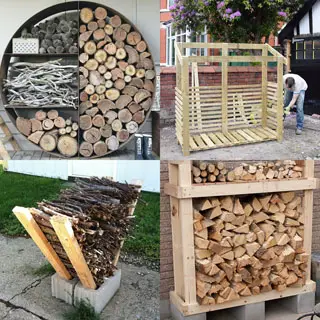What is the Best Wood for a Cutting Board : The Essential Guide
Choosing the right wood for a cutting board is crucial for its durability, maintenance, and overall performance. With so many options available, it can be overwhelming to find the best wood for your cutting board. In this comprehensive guide, we will explore the most popular wood choices and their unique characteristics to help you make an informed decision.

Credit: m.youtube.com
Key Considerations for Choosing the Best Wood for a Cutting Board
Before delving into specific wood types, it’s essential to understand the key considerations when selecting the best wood for a cutting board.
- Hardness: The best wood for a cutting board should be hard enough to withstand the impact of sharp knives, preventing deep cuts and scratches that can harbor bacteria.
- Density: A dense wood will provide a sturdy surface for cutting and chopping, reducing the risk of warping or splitting over time.
- Porosity: While some porosity is needed to absorb excess moisture, the wood should not be too porous, as it can lead to bacterial growth and odors.
- Resistance to Moisture and Mold: The ideal wood should have natural resistance to moisture and mold, making it easier to maintain and clean.
- Aesthetics: While not a functional consideration, the appearance of the wood is important for many users who want a cutting board that enhances their kitchen decor.
Best Wood Types for Cutting Boards
Now that we understand the key factors to consider, let’s explore some of the best wood choices for cutting boards:
| Wood Type | Hardness (Janka Rating) | Density | Porosity | Resistance to Moisture and Mold | Aesthetics |
|---|---|---|---|---|---|
| Maple | 1450 | Hard | Low | High | Light, uniform color |
| Walnut | 1010 | Hard | Low | Medium | Rich, dark brown color |
| Cherry | 950 | Hard | Medium | Medium | Reddish-brown with rich patina over time |
| Bamboo | 1380 | Hard | Low | High | Natural light color with distinctive grain patterns |
1. Maple
Maple is one of the most popular choices for cutting boards due to its hardness and density. With a Janka rating of 1450, it provides an excellent cutting surface that resists cuts and scratches. Its low porosity and high resistance to moisture make it easy to clean and maintain. Additionally, maple’s light, uniform color appeals to those looking for a classic and timeless appearance in their kitchen.
2. Walnut
Walnut is prized for its rich, dark brown color and impressive hardness, with a Janka rating of 1010. Its low porosity and resistance to moisture make it a durable and attractive option for cutting boards. However, it may require more maintenance compared to other woods to preserve its appearance over time.
3. Cherry
Cherry wood offers a unique reddish-brown color that deepens to a rich patina over time, adding character to the cutting board. With a Janka rating of 950, it is suitable for cutting and chopping while maintaining moderate resistance to moisture and mold. Its distinctive color and grain patterns make it a visually appealing choice for a cutting board.
4. Bamboo
Bamboo is a sustainable and environmentally friendly option for cutting boards, known for its exceptional hardness (Janka rating of 1380) and low porosity. Its natural light color and distinctive grain patterns give it a modern and stylish appearance in the kitchen. Bamboo’s high resistance to moisture and mold makes it a low-maintenance choice for cutting boards.
Frequently Asked Questions Of What Is The Best Wood For A Cutting Board : The Essential Guide
What Is The Best Wood For A Cutting Board?
Bamboo is the best wood for a cutting board due to its durability, sustainability, and antimicrobial properties.
Why Is Bamboo A Good Choice For A Cutting Board?
Bamboo is an excellent choice because it is harder than most other woods, resists knife marks, and is sustainable.
Is Maple Wood A Good Option For A Cutting Board?
Yes, maple wood is a popular choice for cutting boards as it is durable, has a tight grain, and is resistant to bacteria.
What Makes Teak Wood Suitable For Cutting Boards?
Teak wood is ideal for cutting boards because it is naturally resistant to moisture, contains natural oils, and has a beautiful appearance.
Conclusion
When selecting the best wood for a cutting board, it’s important to consider factors such as hardness, density, porosity, resistance to moisture and mold, and aesthetics. Maple, walnut, cherry, and bamboo are among the top choices for cutting boards, each offering unique characteristics to suit different preferences and needs. By understanding the properties of these woods, you can make an informed decision to find the best wood for your cutting board that will enhance your cooking experience while adding a touch of elegance to your kitchen.




